Note:
At my request, CosmicSports has provided a Salsa Cutthroat test bike. For this I say thank you! And point out to you that it is or can be advertising. You know this...So this test report is not objective, because I oute myself already now as a Cutthroat lover. Therefore, you must know that before the Salsa Fargo I was very much flirting with the Salsa Cutthroat. Unfortunately, it has turned out nothing, which had delivery bottlenecks as the main reason, but I’m still excited about this bikepacking gravel bike.
Before we go deeper, first the name clarification: With the Cutthroat we are not talking about bloodthirsty practices, but about a fish, more precisely a trout:
The cutthroat trout is also the fish of all the U.S. states through which the Tour Divide (or Great Divide Mountain Bike Route) passes.
The Cutthroat, interestingly enough, is the evolution of the Fargo, towards more sporty riding, but at the same time absolutely designed for the long haul. So on gravel rides over several hours and days. The reason for this evolution was the legendary Tour Divide, the mother (we have many mothers in this text) of all bikepacking long distance races. For this tour of more than 4,000 km from Alaska to the U.S.-Mexican border, Salsa developed the Cutthroat and as a sign of this, printed the complete route of the Tour Divide on the down tube.
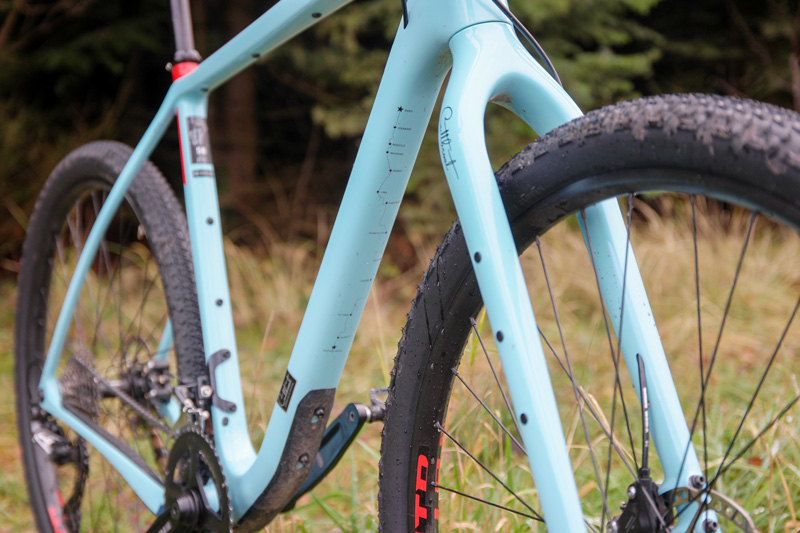
In June 2015, the first Salsa Cutthroat was then presented. At that time, there was not yet the Gravelbike hype and the bikepacking was still in its early days in this country or was still called something else. And what I particularly like: The Cutthroat makes no compromises, but comes in 29 inches only and can tolerate really wide tires. Ready. No 700cc and if it gets bumpy, you may build a second wheelset with 650B on it. No “we have here a crosser somehow made even more suitable for long distances”. You can already see that the mountain bike has been the godfather in the development of the Cutthroat. And that especially with a view to bikepacking and the use of the Cutthroat as an adventure bike.
Pete Hall and Joe Meisner are the brains behind the Cutthroat (Joe especially in the development of the 2nd generation). Pete brings the mountain bike background and Joe comes from a bikepacking/gravel bike racing background. He has already ridden the Tour Divide with the Fargo and was able to bring practical experience into the further development of the Cutthroat.
If you want to know more about it, I recommend the Gravelstoke Podcast with the two:
The Cutthroat Geometry
To differentiate the Cutthroat from the Fargo, I would say: the Fargo is the sporty long-distance chair. The Cutthroat the agile gaming chair. And because that sounds way too flowery, of course, here’s the geometry comparison of the two bikes:
The Fargo is naturally more upright than the Cutthroat, already differs very clearly in frame shape and has more stack (+23.5mm) and less reach (-17.3mm). And it has a longer wheelbase than the Fargo (+7.3mm). But in return, the Cutthroat is slightly lower (5mm) than the Fargo.
For understanding:
- A lot of stack and little reach mean: The frame is slightly shorter and you sit more upright.
- Little stack and a lot of reach mean: The frame is longer and you sit more stretched/athletic on the bike.
Both the Cutthroat and the Fargo are designed on drop bar, though the Fargo could also be ridden with straight handlebars or Jones Bar. According to Salsa, the same is true for the Cutthroat:
However, it’s important to remember that the Cutthroat is designed specifically as a drop bar mountain bike. The switch to a flat handlebar results in a very short top tube length compared to a traditional flatbar mountain bike.
Compared to the more classic gravel bikes, however, the “Cutty” is still different. Thus, compared to the Rose Backroad, it has more than 3cm more stack and 1cm less reach, so it is already more upright.
The same applies to the comparison with the Bombtrack Hook EXT, which has 3cm less stack and almost 2cm more reach than the “Cutty”.
Practical experience & frame set
So the Cutthroat is between worlds, or rather is a world of its own: it’s not quite as upright/comfortable as the Endurance MTB Salsa Fargo, but it’s not a classic sporty gravel bike either.
In practice, the Cutthroat is really fun. This combination of MTB and gravel bike is really great. Often people write something like “agile” and “direct” and “sporty”. In fact, the ride is very pleasant. The bike has a very good propulsion and you can rush so really fast through the country. It does not matter whether on asphalt or gravel and trails – the directional stability is fun.
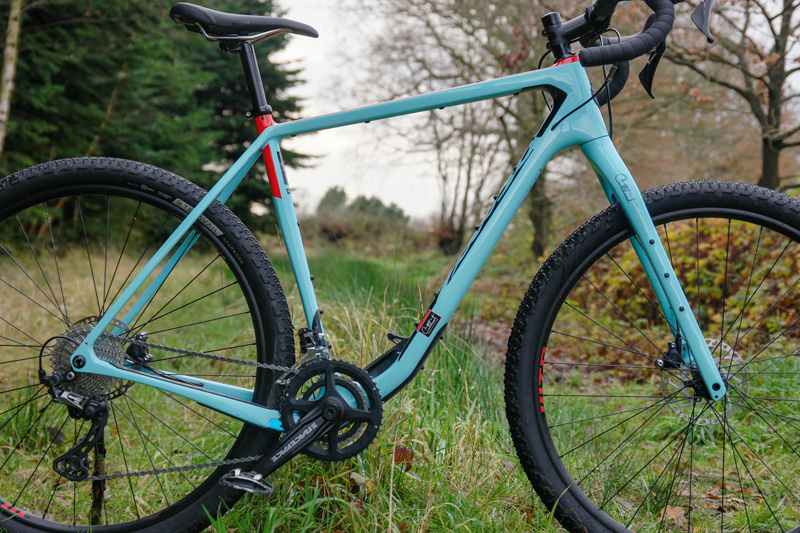
I was particularly interested in the difference to the Fargo. Yes, the Cutthroat has a sportier geometry and is also lighter. The GRX 600 weighs 10.8kg according to the manufacturer, 11.3kg when weighed. The steering angle of 69 degrees on the Cutthroat is also somewhat steeper than the 71 degrees on the Fargo. But both bikes ride similarly on my individual home route. In the speed they do not take much in my riding style, even if the Cutthroat feels a little easier to handle and can be a little faster. And I admit gladly: I was quite considering whether I should not yet get me the frameset of the Cutthroat.
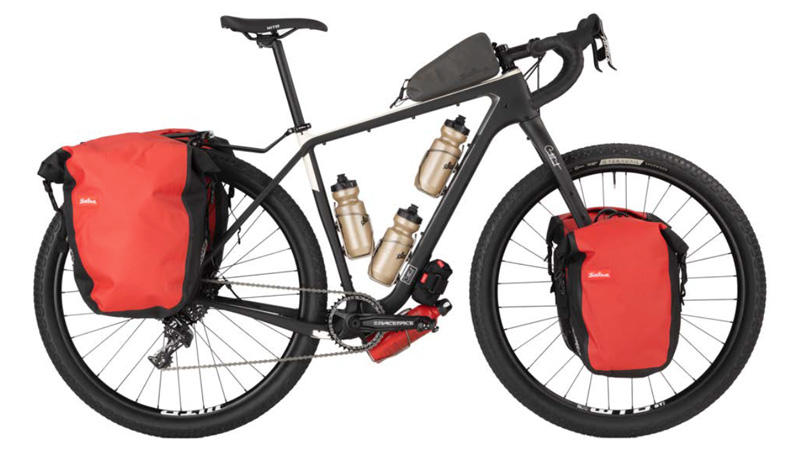
Because like the Fargo, the Cutthroat 2020 is geared towards bikepacking and bike touring. Especially the bikepacking was and is a central aspect of this adventure bike. For this, the frame triangle of the 2020 Cutthroat is optimized and offers a little more space. To make the most of this, there is also a Salsa-own frame bag, which fits like a glove and can be attached to the frame triangle via the numerous eyelets without any straps.

In addition, a luggage rack can be mounted on the Cutthroat (Salsa Wanderlust) and the fork is also designed for LowRider.
Frame and fork have plenty of eyelets and thus offer the possibility to attach additional bags and holders. And so that there are no problems with the bags, all cables are routed internally. Up to a frame size of 54, two bottles can be mounted in the frame triangle. From 56 even three fit inside.
Now I’ve been talking about the merits of the bike all along, but haven’t yet lit up the frame and fork: Both are made of carbon and together weigh 2.32 kg, according to Salsa. The fork including axle comes to 775g alone.
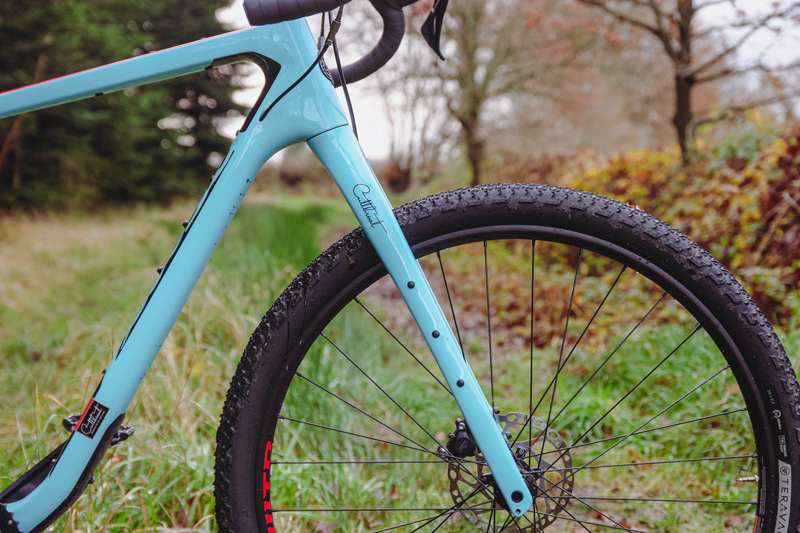
The wheel has Boost standard, so rear a 12x148mm and front a 15x110mm axle. Salsa calls the Road Boost Drivetrain and means the combination of road gears and MTB cranks. And the whole thing with 29 inch tires and a maximum tire width of 2.4 inches. This opens up a lot of scope for the most diverse requirements of such a wheel.
So the frame and fork are very MTB-inspired, but the brakes are installed flat-mount, which in turn is more like gravel bikes. However, this of course makes modern road/gravel gears like the Shimano GRX possible, which come exclusively with flat mount brakes.
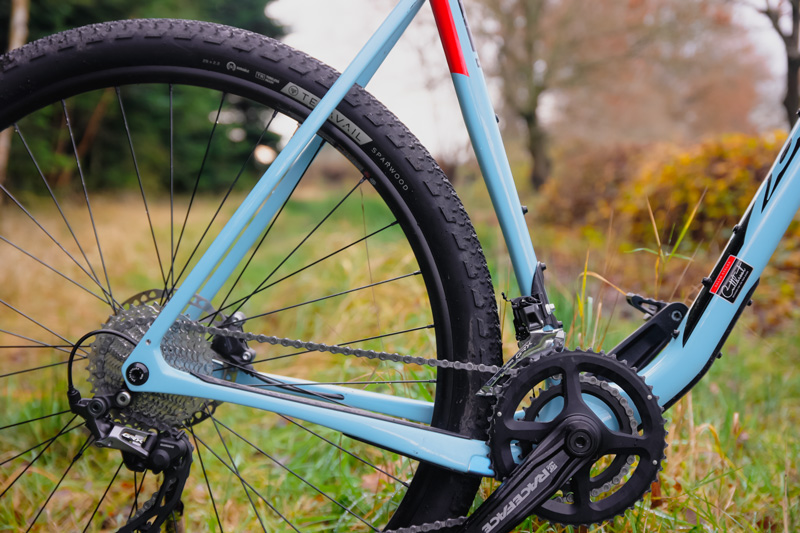
The MTB shines through again with the dropper post compatibility: a retractable seatpost is possible on the Cutthroat. Just like a suspension fork, which the “Cutty” tolerates up to a travel of 100mm. In addition, the frame is protected in the bottom bracket area below by plastic, which is especially good in stony terrain and with carbon anyway not a bad idea to prevent damage by hard stone chips or tree branches. The fork also has areas protected by plastic metal coating on the inside.
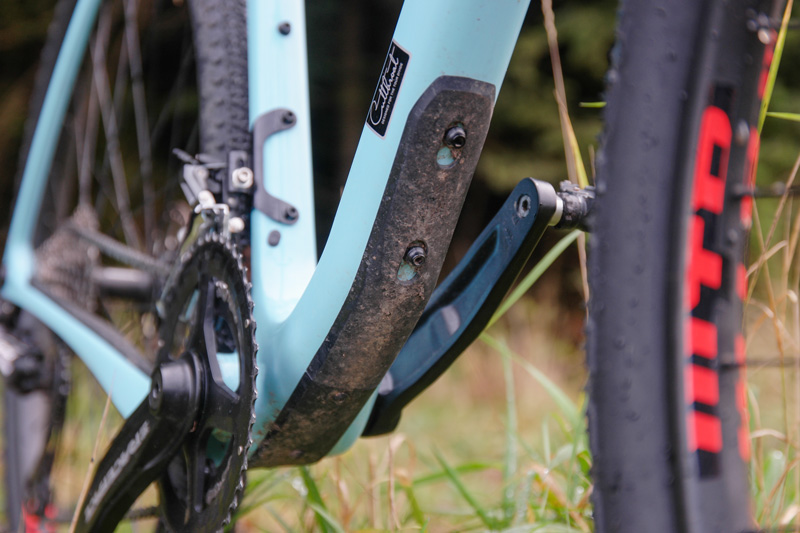
What I like is the expanded range of different frame sizes with the 2020 model. The Cutthroat is now also available in small with a size of 52. In total, the bike is then available in five sizes: 52, 54, 56, 58 and 60.
Special attention should be paid to the Salsa Class 5 Vibration Reduction System (VRS):
Our VRS uses thin, outward-curving seatstays and vertically compliant chainstays to absorb road vibrations that would otherwise impact the rider.
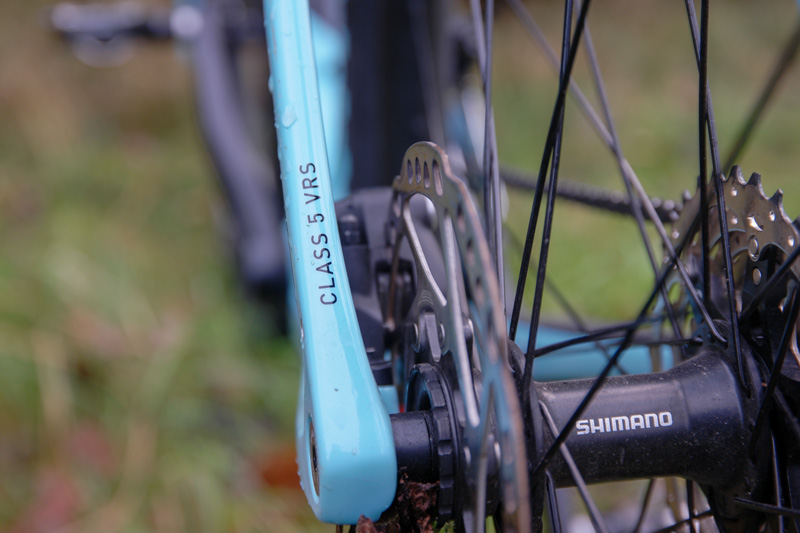
And you notice and feel that a lot. This gives you good traction and control even off-road, which I definitely needed on the test rides (and with the tires…).
The fork is also worth an extra look: Compared to the previous model, it has been redesigned and offers a third more tire clearance according to Salsa. It can also be installed in older frames and has three eyelets on each side to accommodate holders or LowRider. The Salsa Down Under Rack is recommended here. I like the internal dynamo cable routing and the also internally routed brake cable.
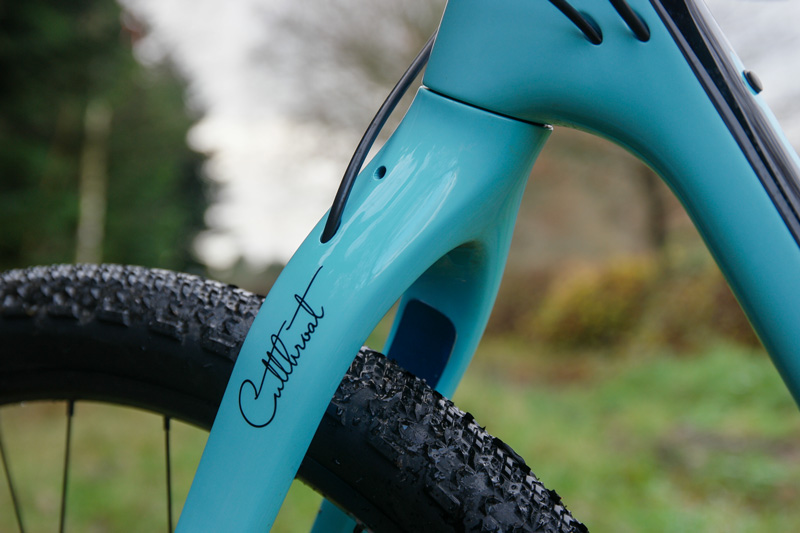
Depending on the version, the Cutthroat comes in different paint finishes. I actually find them quite good, although I personally like the subtle black of the frame kit best. But no matter what: I have found that the paint can withstand quite a bit. Normally, you have to mask off the areas where pockets are to be placed. You should do that, but on my test rides the bag in the frame triangle left no traces in the paint. And that, although it was already very dirty.
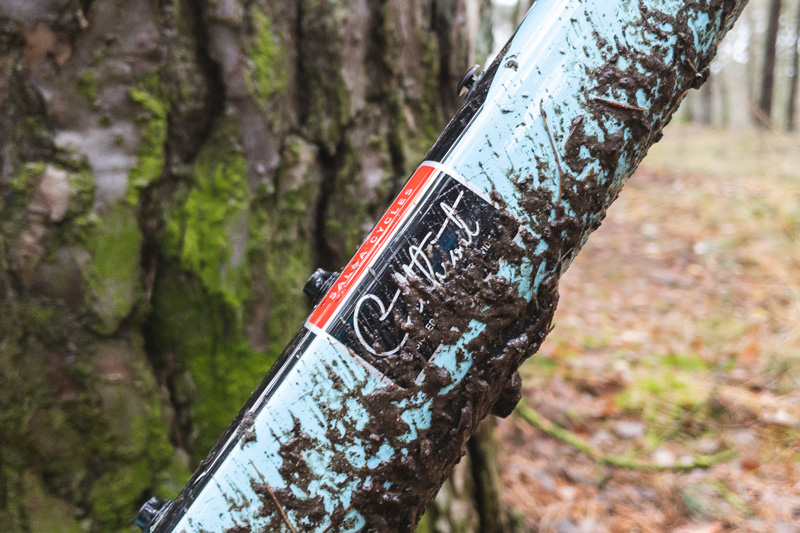
Subject PressFit
If you ask me now what I do not like in the frame, then it is the PressFit bottom bracket. I honestly do not find that so good, because these bearings often crack, require a precise bearing shell and frame and are also not so easy to assemble or disassemble. I would want to use a T47 bearing here, which is simply screwed, has more tolerance and can also take axles with 24 or 30mm. Maybe that will come with a new generation. Why Salsa relies on PressFit here, I do not know and maybe I miss advantages of PressFit. You can refer to it and share your opinion.
Sustainability Carbon frame material
And then, of course, we have to talk about carbon as a frame material. By that I don’t mean the durability. In the meantime, it has been sufficiently proven that carbon can cope well with the toughest conditions.
Since the material has a density four times lower than steel, it is very light. At the same time, it is characterized by high tensile strength and stiffness. This means that the material deforms only minimally under load.
Carbon is ten times stronger than steel and eight times stronger than aluminum. At the same time, carbon is extremely durable and, unlike many metals, insensitive to corrosion.
(Source: https://citizensustainable.com/de/carbon-nachhaltig/)
However, you should always know that damage to the material is sometimes undetectable and the internal structure is affected. In addition, carbon is currently the least sustainable and environmentally friendly material. On the one hand, the production requires oil and the production of the frame is very energy-intensive. But carbon frames require less energy to manufacture than aluminum frames and also cause fewer harmful emissions. For a much more detailed treatise on aluminum vs carbon, check out this article.
However, if you look at traditional steel, the energy consumption of CFRP with 50 percent carbon content is a whole 16 times higher. Inextricably linked to this are high CO2 emissions.
According to estimates, the production of one ton of carbon emits a full 20,000 tons of CO2. This corresponds to the annual CO2 emissions of 2,500 German citizens.
(Source: https://citizensustainable.com/de/carbon-nachhaltig/ )
When it comes to recycling, the balance sheet does not look good either. Recycling, as we know it from other products, is still in the development phase for carbon and it will take some time before recycled carbon fibers find their way back into new frames. A good overview of the current recycling status of carbon can be found here.
Gear & Brakes
There are a total of six Cutthroat models – four of them with 1-speed shifting from SRAM, two with 2-speed shifting and the Shimano GRX. I had the model with GRX 600 to test.
The Shimano GRX is a very reliable and performant circuit, although I honestly find the 800/810 series better in shifting performance and accuracy.
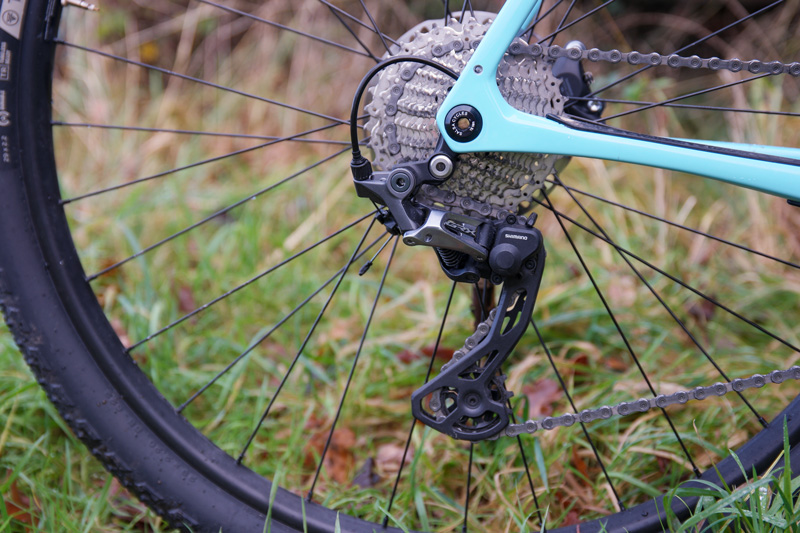
What I do not like, however, is the 2-speed variant on the Cutthroat. In my view, the bike is predestined for 1-way circuits and should therefore be offered only with these. I understand of course the offer of 2-speed shifting as a “smooth transition” for from road bike or beginner-gravel bike coming rider, but I personally would ride the Cutthroat only with 1-speed shifting.
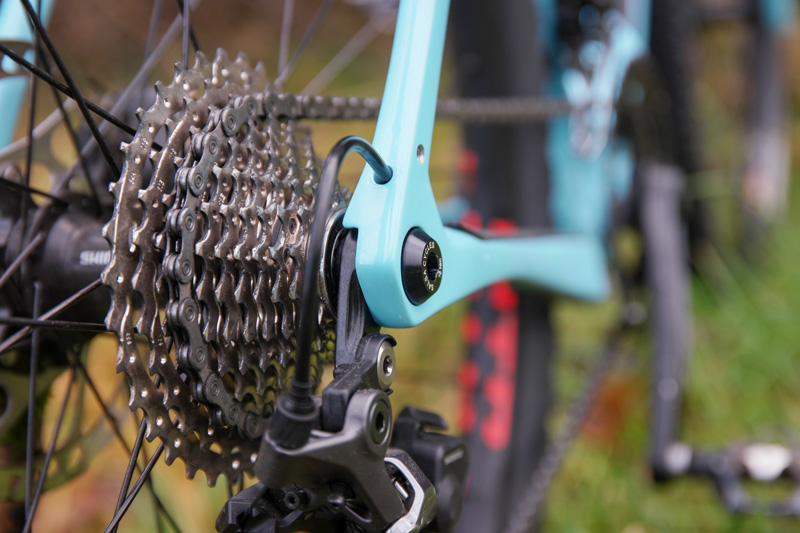
But variety is always better, which is why the Road Boost Drivetrain concept from Salsa, which I mentioned above, offers various shifting options that are reflected in the available Cutthroat models:
- 1-speed mechanical with MTB Boost crank (up to a maximum of 40 teeth) and road gears (such as Apex or GRX).
- 2-speed mechanical with Race Face MTB Boost cranks and Easton Direct Mount blades (maximum 50/34 teeth, in series it comes with 46/30) and road gears
- Shimano Di2 1-speed and 2-speed compatible (MTB cranks Boost)
- SRAM AXS 1x compatible (with MTB crank Boost). Why it is not explicitly SRAM AXS 2X compatible, I do not know. Maybe one of you can also reference here if you have this info.
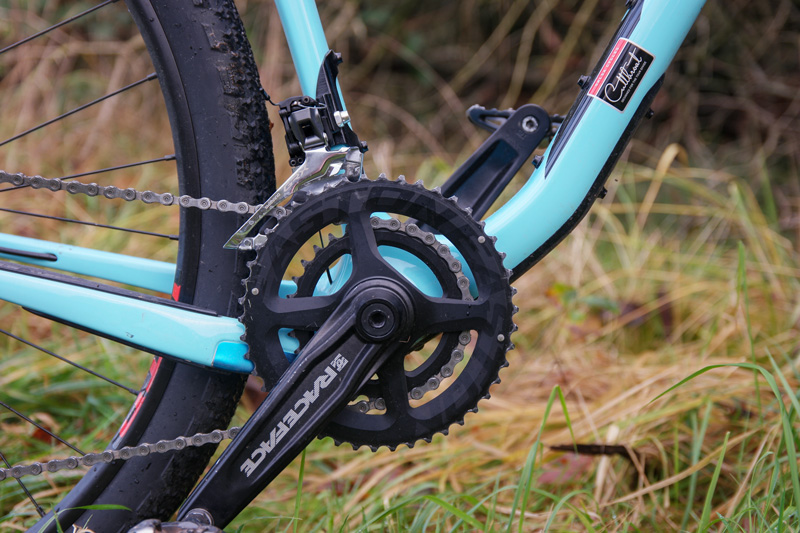
The test bike had 46/30 in front and a 11-34 cassette in the rear. Thus, a slight “undershift” is possible and the bike in normal terrain even with luggage still good to ride. I rode the bike a lot in bad weather and a lot of mud and dirt. Unfortunately, the front derailleur has regularly clogged and could no longer be switched. For this reason alone 1x is already at an advantage. In these conditions, however, the rear derailleur also had its problems from time to time to always react and engage the gear.
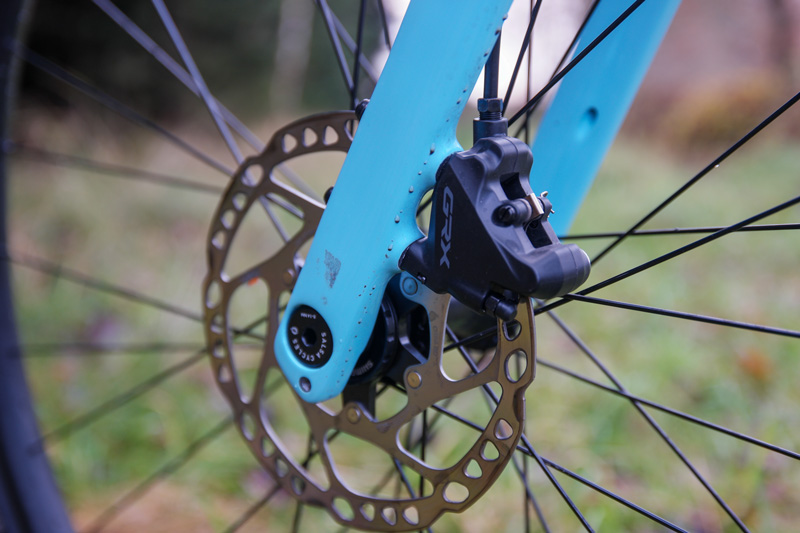
Braking is done with GRX 600 brakes on 160 discs. As expected, this also works well, crisp enough and reliable. What I always have to get used to again is the brake shift lever of the GRX. I may laugh at me for it, but just with gloves it happens to me already often that I brake lightly when shifting at the same time. But probably I’m just used to SRAM 🙂
Wheels & Tires
For the wheels, Salsa relies on the WTB ST TCS 2.0 i25 rims with 32 holes on the GRX 600 model. This aluminum rim is quite light at 450g and has a jaw width of 25mm. It is Tubeless Ready and has an interesting aspect:
A recessed channel in the center of the rim allows the integration of the Solid Strip on TCS 2.0 rims, delivering the easiest and most reliable tubeless system WTB has ever built. It prevents sagging of the tubeless tape at the spoke holes and provides a smooth, consistent connection between tire and rim.
(Source: https://www.bike24.de/p1292561.html )
The Boost hubs with centerlock come from Shimano and are designated MT400-B. They correspond to the Acera group, so they are rather cheap, but that doesn’t mean they won’t last.
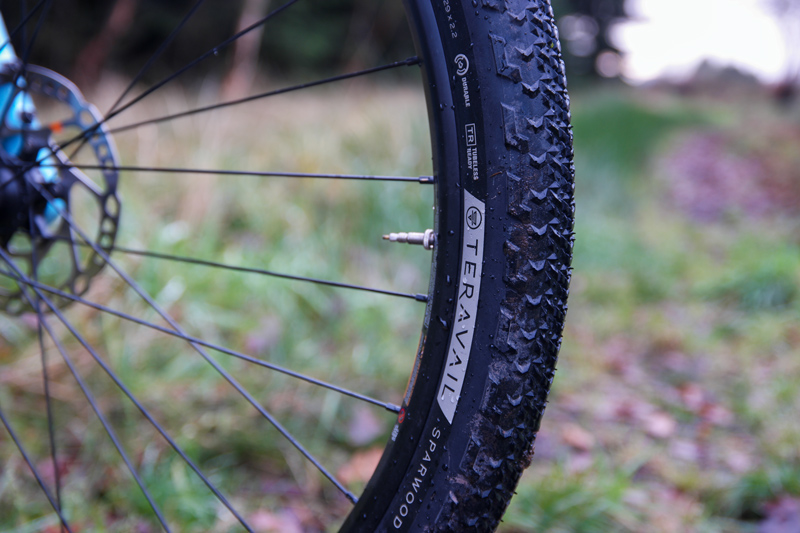
The tires are from Teravail and are certainly not the worst choice with the Sparwood 29″ 2.2 inch wide. I also got the Sparwood once for the Fargo to try them out there. They have a reputation for being the ideal tires for adventures like the Tour Divide. According to my practical experience, which has now been repeated on the Cutthroat, the Sparwood are indeed fast and not bad off-road – but only if it is dry. And even there they like to slip away on dry leaves. I’ve ridden the tires at 2, 2.5 and 3 bars. And each time I found them in the wet, mud or coarser terrain not good and rather bumpy and without grip. Since the “Cutty” can still be so track – with the Sparwoods it goes somewhere else anyway. Too bad actually. I’m currently riding the combination of Mezcal and Sparwood on the Fargo and I notice the differences considerably here as well.
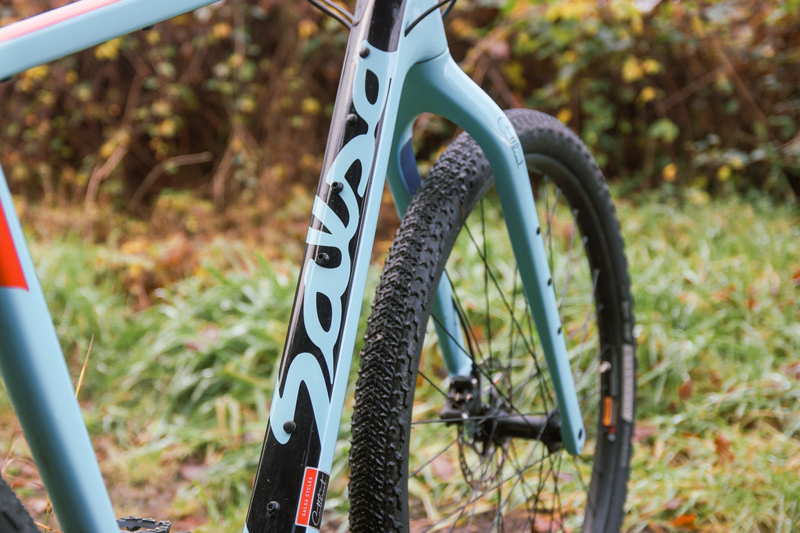
However, the Sparwoods are quite logical as cutthroat tires, because fast and rideable on dry gravel. There they can support the Cutthroat potential already and unfold. But when it becomes more uncomfortable, then they reach their limits from my point of view. You can also refer to this with pleasure, if you have also made practical experiences with the Teravail tires.
Handlebars, Saddle & Co.
I can not complain about the handlebars and stem. With the Salsa Cowchipper and the Salsa Guide stem, the Cutthroat relies on very good components that should actually be fun for every rider. The Cowchipper is a very comfortable handlebar that, depending on its width, guarantees very good control of the bike, even in the lower handlebar and off-road. I ride the handlebar and stem also on my Fargo.
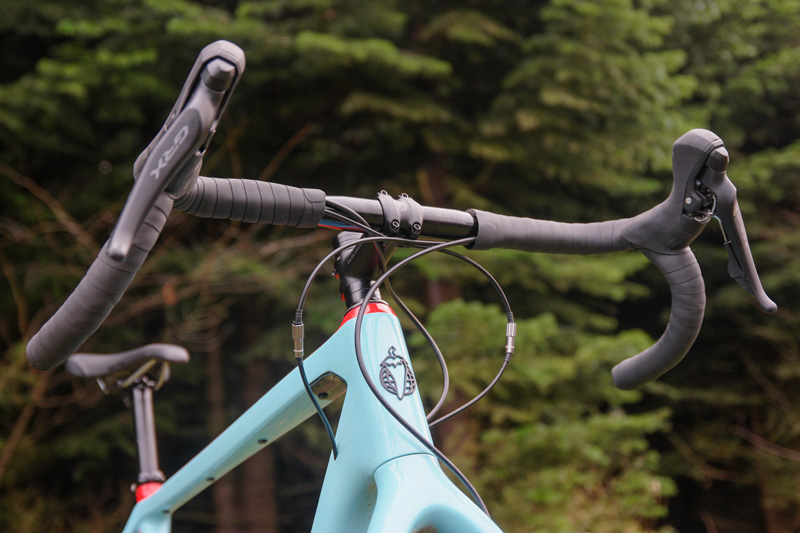
The saddle is from WTB (SL8) and sits on a Guide seatpost. There is nothing to note about this saddle, which is yes the best verdict. It caused no problems and sat perfectly from the start – even after several hours of riding.
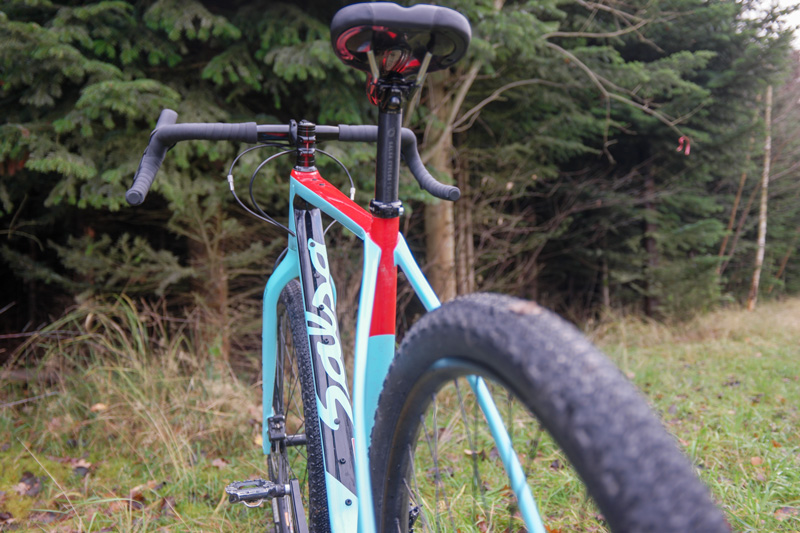
Conclusion & Classification in Martin’s Allroad Bike Categorization
As you know, I have developed an Allroad bike categorization, in which I classify all the bikes I test and thus create a little more clarity.
This is not easy, also because the variety of types, applications, categorizations and trend designations make it almost impossible to structure this once. Nevertheless, I have tried it once. I have formed three categories under the umbrella term all-road bike, which of course overlap and thus also have commonalities:

- Performance & Race: Some of the bikes come from and/or are inspired by the road bike/crosser sector. Especially road cyclists who switch to gravel will enjoy these very sporty bikes, which are primarily intended for competitive use.
- Leisure & Everyday: Here I see the bikes that combine the sporty and the relaxed, and with which you can go almost anywhere without thinking much about it. Yes, here we’re talking mainly about the classic gravel bike as a primo offering to those who don’t want to worry about the surface anymore, but just want to ride.
- Travel & Adventure: Yes, even the daily commute to work can be adventure, but in this category I see all bikes that are suitable for almost all terrains, whose roots lie more in MTB and that make off-road, bikepacking and bike travel in all varieties possible.
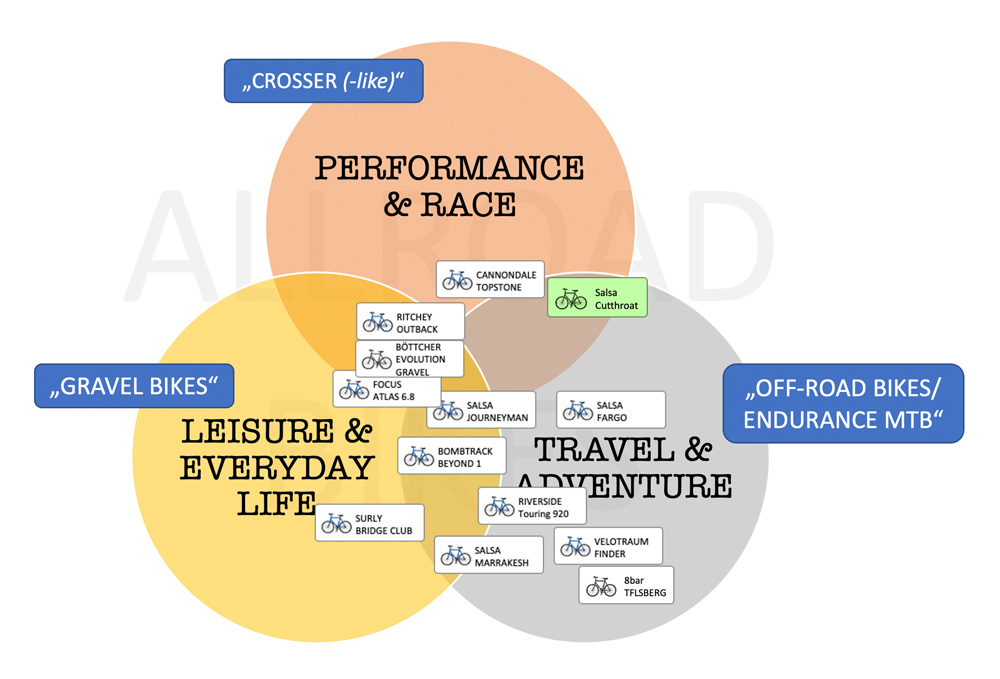
In my view, the Salsa Cutthroat is the ideal mix of Performance & Race as well as Travel & Adventure, making it the perfect bike for those who want to go all out on bikepacking races, but also want to do normal bike travel of a sporty nature. You don’t need two or more bikes for that – one Cutthroat is enough!
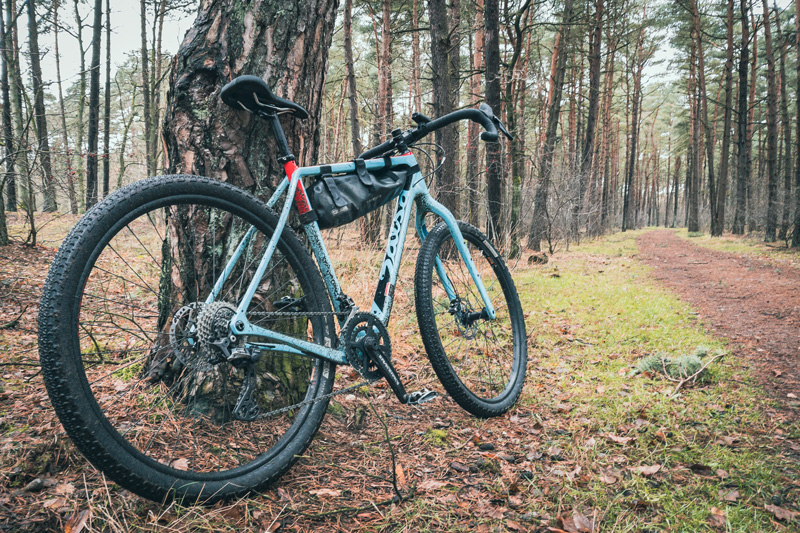
And that is already my conclusion.
The Cutthroat combines in a very attractive and convincing way a bikepacking race and sporty touring bike in one. The combination of MTB and gravel bike is already very smart.
Especially how the space on the bike is maximized and consistently thought on bikepacking. On the suitably available frame bag for the Cutthroat I’m kind of jealous …
It is a lot of fun to be on the road with this bike. The suspension system is noticeable and provides a good and controlled glide in the forest or off-road. From my point of view, however, the bike must be ridden with 1x gears. Not only for optical reasons, but to call the full potential of this bike.
This is now of course very subjective-flat, but if you are a Cutthroat driver, then you can also refer to this.
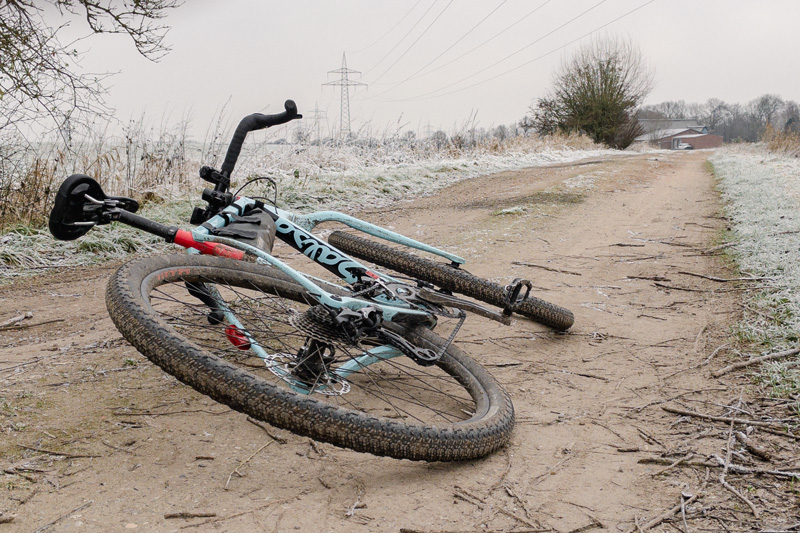
And I would honestly replace my Fargo immediately, if not the Cutthroat with PressFit and would be made of carbon. With the second I could still make myself friends, but the first is a reason for me to say no. And with a frame kit price of $2,600 and my way of riding and using a bike, I wouldn’t be sure if the frame would hold up then or not take damage.
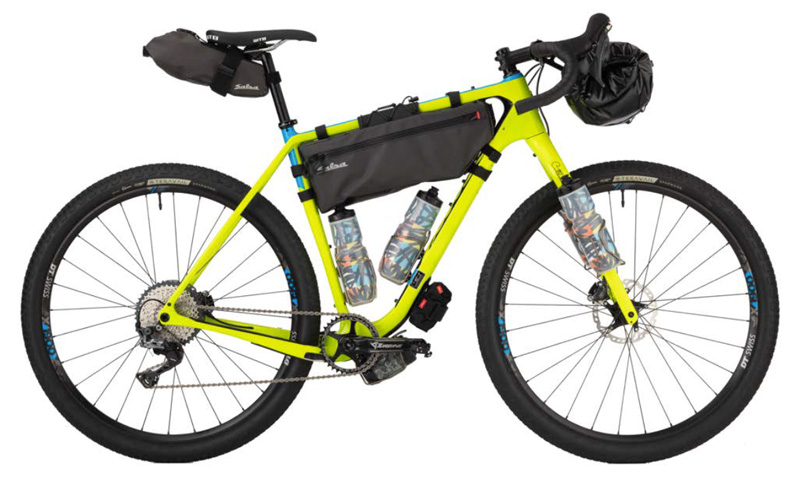
And so the Cutthroat remains an unfulfilled love for me for now. We both fit together and you would certainly bring me further in my sport. But maybe sometime that will be something with us – I’m waiting for you!

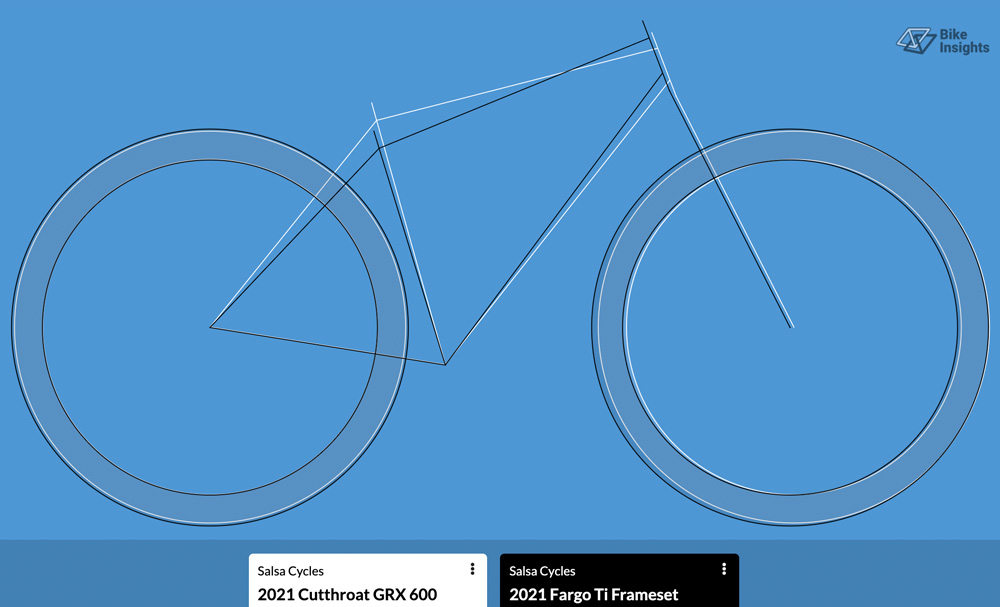
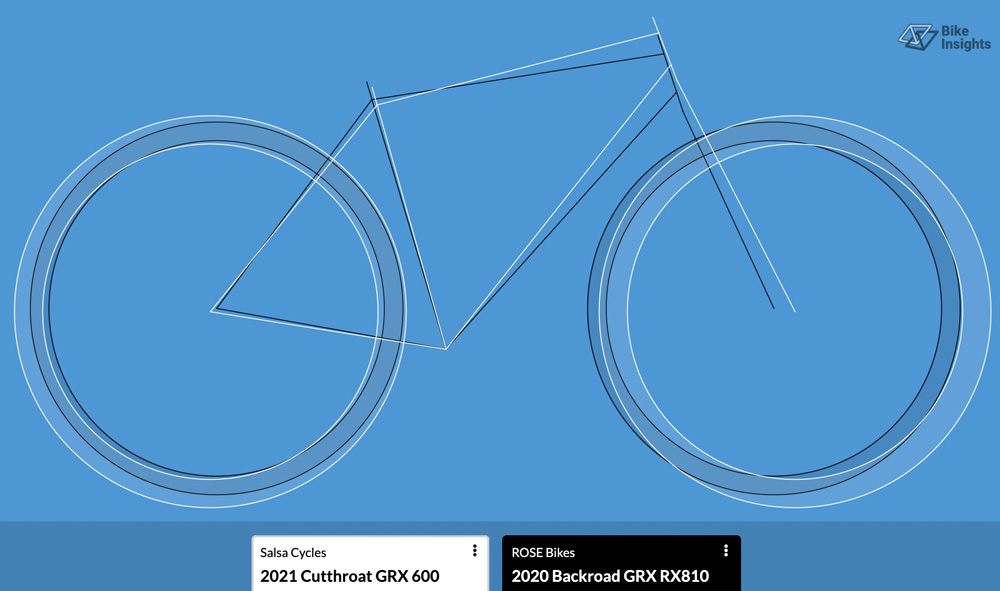
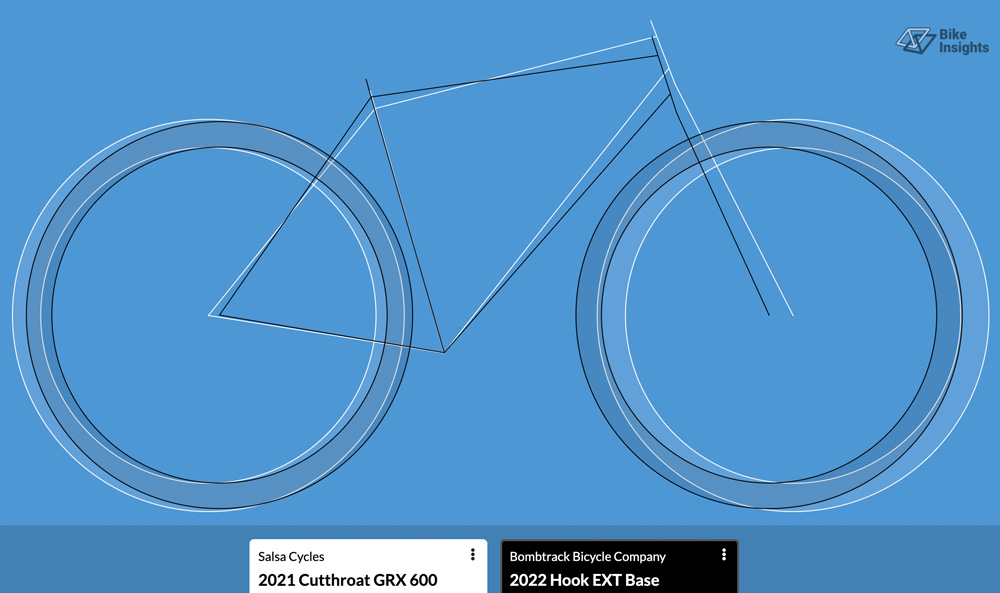
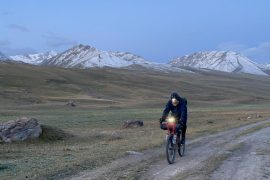



The Cutthroat is a very tempting bike for me but the carbon frame over the Fargo steel is still a concern for me. You say the 1x is the way to go on this bike but never explain your reasons. The entry level bike with GPX only comes with 11-42. The GPX cant handle the 11-50. From my experience touring the GDMBR and other routes I require a low gear of 20 gear inches and don’t like to totally spin out when on long downhills or on pavement. A 2x gets me closer to my needs as an fit rider not a strong racer. The 2x also results in closer ratios.
The Cutthroat has been tried and tested by a whole lot of riders for years, particularly in the Tour Divide. If the press fit bottom bracket is a real issue, maybe these actual riders who have gone thru 3000 miles using the Cutthroat would have made a legitimate issue out of it.
You make a good point especially since a casual look of the bikes of the GDMBR Grand Departure last year I seem to recall that the majority were Cutthroats.